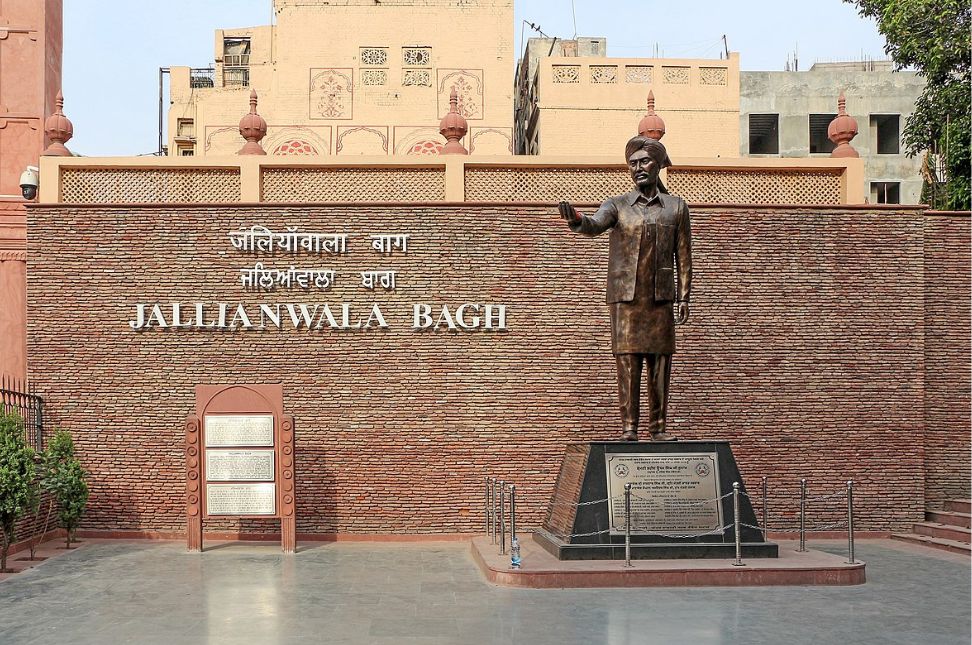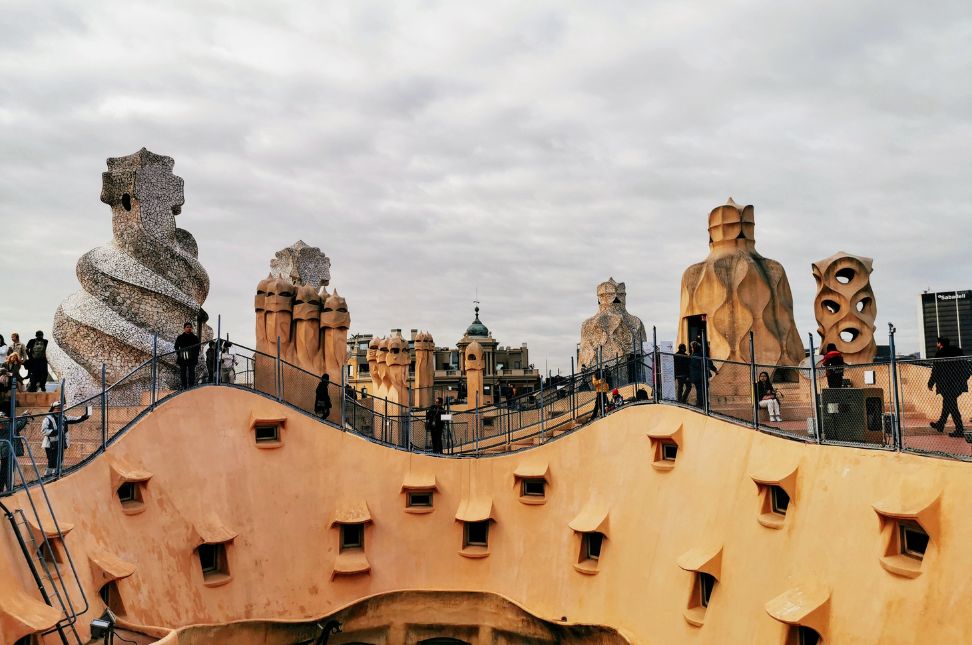The Jallianwala Bagh Memorial stands as a somber reminder of one of the darkest chapters in India’s struggle for independence. Located in Amritsar, Punjab, this historical site commemorates the tragic massacre that occurred on April 13, 1919. It marks the day when British troops, under the command of General Dyer, opened fire on thousands of peaceful protestors, killing and wounding hundreds. The Jallianwala Bagh Memorial not only pays tribute to the martyrs but also symbolizes the spirit of resistance and courage that ultimately led to India’s freedom.
The Historical Background
In the early 20th century, India was under British colonial rule, and discontent among the Indian population was growing due to oppressive policies. The Rowlatt Act, introduced in 1919, allowed the British government to arrest and imprison individuals suspected of sedition without trial. This draconian law sparked widespread protests across the country, including in Amritsar. On April 13, 1919, a large crowd gathered at Jallianwala Bagh to peacefully protest against the Rowlatt Act.
Unbeknownst to them, General Dyer had implemented a curfew and banned public gatherings. Despite this, thousands of men, women, and children assembled at Jallianwala Bagh to express their dissent. What followed would forever be etched in the annals of history. General Dyer ordered his troops to block the exits and open fire on the crowd without warning. The massacre lasted for about ten minutes, during which over 1,000 rounds were fired. Official British figures reported 379 dead, but Indian estimates placed the death toll much higher, at over 1,000.
The Creation of the Jallianwala Bagh Memorial
The tragic event at Jallianwala Bagh shocked the nation and the world. It became a pivotal moment in India’s freedom movement, galvanizing leaders like Mahatma Gandhi to intensify their efforts against British rule. In memory of the lives lost, the Jallianwala Bagh Memorial was established in 1951. The memorial was designed to preserve the site as a symbol of resistance and sacrifice.
The Indian government acquired the land and began the process of turning it into a national monument. The site was carefully preserved, with the bullet marks on the walls and the well into which people jumped to escape the bullets still visible today. These elements remain powerful visual reminders of the horror that unfolded at Jallianwala Bagh Memorial.
Key Features of the Jallianwala Bagh Memorial
Visitors to the Jallianwala Bagh Memorial are greeted by a simple yet poignant structure. The Flame of Liberty, an eternal flame, stands as a central piece, symbolizing the resilience and courage of those who lost their lives. The walls of the garden still bear the bullet marks, a chilling reminder of the violence that took place.

One of the most heartbreaking sights at the Jallianwala Bagh Memorial is the Martyrs’ Well, where many people, in their desperation to escape the bullets, jumped to their deaths. Over 120 bodies were recovered from this well after the massacre. This well has since been enclosed with a structure and remains one of the most visited spots within the memorial complex.
The Martyrs’ Gallery displays images, documents, and artifacts from the day of the massacre, providing a detailed account of the events and their aftermath. The gallery serves as an educational space for visitors to learn about the history of the massacre and its impact on India’s fight for independence.
The Impact of the Massacre
The massacre at Jallianwala Bagh had far-reaching consequences for both India and the British Empire. For the Indian people, it was a wake-up call that revealed the brutal lengths the colonial government would go to in order to suppress dissent. The event deeply affected Indian leaders, particularly Mahatma Gandhi, who had initially supported British efforts during World War I. After the massacre, Gandhi launched the Non-Cooperation Movement, urging Indians to boycott British goods and institutions.
The massacre also received widespread condemnation from the international community. British authorities initially tried to downplay the incident, but as the news spread, it drew harsh criticism from various quarters, including the British Parliament. General Dyer was removed from his post, but he was never prosecuted for his actions, which further fueled Indian anger and resentment.
In 1940, Udham Singh, a survivor of the massacre, assassinated Michael O’Dwyer, the former Lieutenant Governor of Punjab who had supported Dyer’s actions. This act of revenge highlighted the lasting impact the massacre had on those who witnessed it firsthand.
The Role of Jallianwala Bagh Memorial in Modern India
The Jallianwala Bagh Memorial continues to hold immense significance in modern India. It serves as a place of reflection and remembrance for the sacrifices made by ordinary citizens in the struggle for freedom. The memorial is visited by thousands of people every year, including school groups, tourists, and political leaders.
In recent years, efforts have been made to preserve and enhance the memorial to ensure that future generations understand the importance of this historical site. In 2019, on the 100th anniversary of the massacre, the Indian government announced plans to upgrade the facilities and create a more comprehensive museum experience for visitors. These efforts are aimed at keeping the memory of Jallianwala Bagh Memorial alive for generations to come.
Jallianwala Bagh Memorial in Global History
While the Jallianwala Bagh Memorial is a deeply personal part of India’s history, its significance extends beyond national borders. The massacre is often cited as one of the key events that led to the decline of British colonialism in India. It laid bare the injustices of colonial rule and sparked a global conversation about human rights and the ethics of empire.
In recent years, there have been calls from various quarters for the British government to formally apologize for the massacre. While some British leaders have expressed regret over the incident, no official apology has been issued. The legacy of Jallianwala Bagh Memorial continues to be a point of discussion in India-UK relations, particularly as it relates to the history of colonialism.
Why Visit Jallianwala Bagh Memorial?
Visiting the Jallianwala Bagh Memorial is a deeply moving experience. It offers a chance to reflect on the sacrifices made during India’s fight for independence and to learn more about the historical context in which these events unfolded. The bullet-riddled walls and the Martyrs’ Well are stark reminders of the violence and suffering endured by innocent people.

For those interested in history, a visit to Jallianwala Bagh Memorial provides invaluable insights into the complexities of colonial rule and the Indian freedom struggle. The site stands as a testament to the courage and resilience of the Indian people, and it remains an essential stop for anyone looking to understand the full scope of India’s fight for independence.
Conclusion
The Jallianwala Bagh Memorial is not just a monument; it is a symbol of resistance, sacrifice, and hope. The events that took place at Jallianwala Bagh on April 13, 1919, changed the course of Indian history, igniting a movement that would eventually lead to the country’s independence. As one of the most important landmarks in India, the Jallianwala Bagh Memorial continues to remind us of the cost of freedom and the enduring spirit of those who fought for it.
By visiting the Jallianwala Bagh Memorial, individuals can pay their respects to the martyrs and gain a deeper understanding of India’s rich and complex history. The legacy of this tragic event lives on, not only in India but also in the global consciousness, as a stark reminder of the human cost of oppression.




